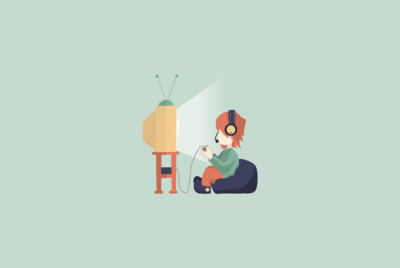The Role of Player Feedback in Game Design
In our journey through the intriguing world of game design, we’ve come to understand the pivotal role player feedback plays in shaping and refining gaming experiences. “The Role of Player Feedback in Game Design” explores how players’ voices influence every stage of game development, from initial concepts to final tweaks. By actively incorporating players’ thoughts and critiques, game developers can create more engaging, fun, and finely-tuned adventures that resonate deeply with those who play them. Our article delves into the importance of this feedback, illustrating how it leads to games that not only meet but exceed players’ expectations. Have you ever wondered what role player feedback plays in game design? As avid gamers and game designers ourselves, we’ve witnessed firsthand how crucial player feedback is in shaping the experiences we all love. Let’s dive deep into this topic, exploring how player feedback helps create better games, why it’s essential, and how game developers use it effectively.

Understanding Player Feedback
What Is Player Feedback?
Player feedback is the information provided by players about their experiences while engaging with a game. It can come from various sources, including playtesting sessions, online forums, social media, and direct communication with developers.
Why Is Player Feedback Important?
Player feedback is a goldmine of information for game developers. It provides insights into what works well and what doesn’t. By tapping into this resource, developers can identify bugs, understand player preferences, and ultimately create a more enjoyable gaming experience.
Types of Player Feedback
Direct Feedback
Direct feedback is any commentary or observation made directly by players. This can be gathered through surveys, interviews, focus groups, or playtesting sessions.
Indirect Feedback
Indirect feedback is gathered through the monitoring of player behavior in the game. This can include tracking metrics such as player retention rates, level completion times, and in-game actions.
Quantitative Feedback
Quantitative feedback is numerical data that can be measured and analyzed statistically. Examples include the number of players completing a level, time taken to defeat a boss, and frequency of in-game purchases.
| Feedback Type | Source | Example |
|---|---|---|
| Direct | Surveys or interviews | “The controls feel unresponsive.” |
| Indirect | Behavioral analytics | Players spending too much time on a level |
| Quantitative | In-game metrics | 70% of players quit after level 3 |
How Developers Collect Player Feedback
Playtesting
One of the most reliable ways to collect player feedback is through playtesting. By observing players as they interact with the game, developers can gain direct insights into how the game is experienced in real-time.
Surveys and Questionnaires
Surveys and questionnaires offer a structured way to gather player feedback. Asking players to rate their experiences or describe specific issues can yield valuable data.
Online Forums and Social Media
Developers often turn to online forums and social media to gather feedback. Platforms like Reddit, Twitter, and Discord are teeming with communities eager to discuss game mechanics, storylines, and more.
In-Game Feedback Systems
Many games now include built-in feedback systems, allowing players to report bugs or share their thoughts directly through the game interface. This method ensures that feedback is contextual and relevant.
Behavioral Analytics
By monitoring how players interact with the game, developers can collect indirect feedback. This might include tracking how often players return to the game, the challenges they face, or which items they purchase.
Analyzing Player Feedback
Categorizing Feedback
Once collected, player feedback needs to be organized into categories for effective analysis. Common categories include gameplay mechanics, graphics, storylines, and bugs.
Prioritizing Issues
Not all feedback is created equal. Developers must prioritize the issues based on factors like the severity of the problem, the number of players affected, and the impact on the overall gaming experience.
Quantitative Analysis
For quantitative feedback, developers use statistical methods to identify patterns and trends. For example, if a large percentage of players are quitting after a particular level, it indicates a potential issue that needs addressing.
Qualitative Analysis
Qualitative feedback, such as player comments and suggestions, requires a different approach. Developers often look for recurring themes and sentiments to understand players’ emotional responses to the game.

Implementing Changes Based on Feedback
Iterative Design
Game design is often an iterative process. Developers use player feedback to make continuous improvements. By testing and retesting, they can refine game elements until they meet player expectations.
Bug Fixes
Player feedback is crucial for identifying and fixing bugs. Developers rely on detailed error reports and player experiences to pinpoint issues and ensure the game runs smoothly.
Enhancing Game Mechanics
Feedback often highlights which game mechanics are working well and which aren’t. Developers can use this information to tweak mechanics and create a more engaging experience.
Expanding Content
Player feedback can also guide the development of new content. If players express a desire for additional levels, characters, or storylines, developers can use this feedback to plan future updates.
Case Studies: Successful Use of Player Feedback
“Fortnite” by Epic Games
Epic Games has famously used player feedback to shape “Fortnite,” consistently adding new content, balancing gameplay, and fixing bugs. The game’s enduring popularity is a testament to how well player feedback has been integrated into its design process.
“No Man’s Sky” by Hello Games
Initially launched to mixed reviews, “No Man’s Sky” underwent significant improvements based on player feedback. Hello Games released several updates that addressed player concerns, ultimately transforming the game into a beloved title.
“The Witcher 3: Wild Hunt” by CD Projekt Red
CD Projekt Red has a reputation for listening to its community. Through player feedback, they improved mechanics, fixed bugs, and even added new features, helping “The Witcher 3” become one of the most acclaimed games of its generation.

Challenges in Leveraging Player Feedback
Interpreting Feedback Accurately
One of the biggest challenges is interpreting feedback accurately. Players might not always articulate their experiences clearly, making it difficult for developers to understand the core issues.
Balancing Diverse Opinions
Players have varied preferences and opinions, which can sometimes conflict. Developers need to find a balance between satisfying different segments of their player base.
Managing Expectations
Player feedback can create high expectations, and not all suggestions can be implemented. Developers must manage these expectations transparently to maintain trust within the community.
Resource Allocation
Implementing changes based on player feedback requires resources. Developers must prioritize which feedback to act on, often balancing it against financial and time constraints.
Best Practices for Using Player Feedback
Active Engagement
Developers should actively engage with their player community. Participating in forums, responding to social media comments, and hosting Q&A sessions can build a strong relationship and encourage more constructive feedback.
Transparency
Maintaining transparency about what feedback can and cannot be implemented is crucial. Developers should communicate their plans and the reasons behind their decisions openly.
Regular Updates
Frequent updates based on player feedback demonstrate that developers are listening. It also helps keep the game fresh, ensuring players remain engaged.
Building a Feedback Loop
Creating a continuous feedback loop can sustain ongoing improvements. Here’s how:
- Collect feedback through various channels.
- Analyze the feedback to identify key issues.
- Implement changes based on the feedback.
- Communicate the changes to the player base.
- Monitor the impact of these changes.
Conclusion
Player feedback is undeniably a cornerstone of modern game design. Its role extends beyond simply fixing bugs or addressing immediate issues; it is integral to creating an engaging, enjoyable, and lasting gaming experience. By listening to players, analyzing their feedback thoroughly, and implementing necessary changes, game developers can ensure their creations continually evolve and improve.
As we continue to play and create games, let’s remember the value of this dialogue between players and developers. It’s more than just a commentary; it’s a collaborative effort to make games better for everyone. Thanks for joining us on this exploration of the role of player feedback in game design—now let’s get back to playing and designing great games!


